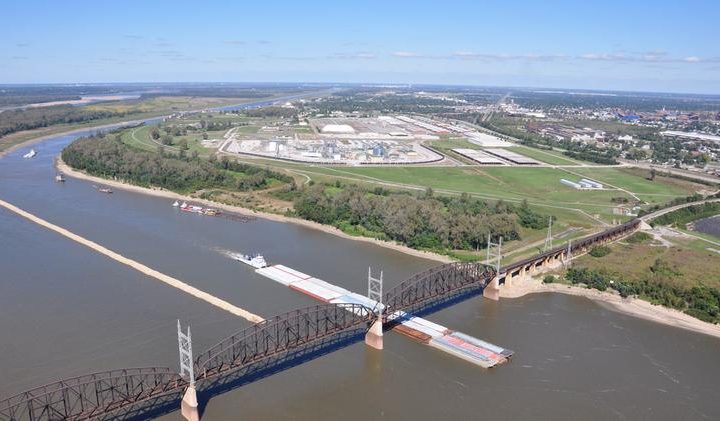
This story was originally published in West Newsmagazine on July 4, 2016.
By Staff | West Newsmagazine
Trains, planes, barges and trucks. The St. Louis area has a lot going for it when it comes to its multimodal transportation system, but hasn’t done a very good job marketing that idea to businesses interested in those and other strengths of the region.
Mary Lamie, who stepped into the executive director position of the new St. Louis Regional Freightway [SLRF] one year ago, is convinced that situation needs to change. And, based on a report she gave at a recent Progress 64 West meeting, she is well on her way to doing that.
SLRF is a part of Bi-State Development, which launched the enterprise after being asked to coordinate and energize the effort to establish the metropolitan area as a regional transportation center.
The task was a new one for Bi-State, so to say Lamie had to start from scratch in her new job would be a classic understatement. As John Nations, Bi-States’ CEO, said in introducing Lamie to Progress 64 members, “when she arrived on the job, she had an office, a desk and a computer – and that was it.”
What she needed to do first, second, third, etc., was up to Lamie. There were no files from a predecessor to review and literally no background information on Bi-State’s previous activities, because everything was new.
What Lamie did have was more than 25 years of experience in transportation, engineering and management, including 23 years with the Illinois Department of Transportation. For the last seven years she had served as IDOT’s deputy director of highways in Region 5 [the southwestern area of the state], where she was responsible for more than 800 employees, 3,300 lane miles of state highways and 1,700 bridges. Lamie also holds a master’s degree in civil engineering from Missouri University of Science and Technology.
That background meant she knew many people in the transportation sector, whom she could tap for help on both sides of the Mississippi River and beyond. The bistate area includes the city of St. Louis as well as St. Charles, Franklin, Jefferson and St. Louis counties in Missouri, and Madison, St. Clair and Monroe counties in Illinois.
The area’s existing transportation assets include four interstate highways; a total of five airports; six Class 1 railroads; the nation’s third-largest inland port, which also is the country’s northernmost ice-free and lock-free location; and six natural gas and nine refined product pipelines.
In addition, the area’s central location, its skilled workforce, available real estate, presence of other large companies and proximity to manufacturing suppliers are strengths that often are not fully realized or are under-marketed.
While much is right with the region, that’s not to say everything is perfect. Lamie’s priority list of transportation-related improvements include major infrastructure projects, such as:
- Replacement of the 126-year-old Merchants Rail Bridge at an estimated cost of $222 million and the I-270 bridge, both of which span the Mississippi. The projected price tag of the latter project is between $160 million and $175 million.
- Increasing the capacity of I-270 by widening it to six lanes between Lilac Avenue in North St. Louis County and Illinois Route 111, at an estimated cost of $350 million to $400 million, and making other corridor improvements from Lilac to Lindbergh Boulevard at an estimated cost of $243 million.
- Improving mobility and circulation in the north riverfront commerce corridor at an estimated cost of $55 million.
- Relocating Route 3 in St. Clair County to improve access to I-70, Stan Musial Veterans Memorial Bridge, Sauget Industrial Park and St. Louis Downtown Airport. Depending on road width [two or four lanes], that cost is estimated at $125 million or $170 million.
- Building a bypass loop from Illinois Route 3 over the A&S railroad in Sauget to eliminate substantial through-traffic delays at an estimated cost of $20 million to $25 million.
Lamie also has established a number of committees to work on key issues and develop and build partnerships with other regions that can benefit from the bistate’s freight and manufacturing investments. The working relationships would include not only major midwestern cities but ports, such as New Orleans and Houston, as well.
The SLRF wants to replace the “silo approach” that has had individual government entities and transportation-related businesses doing their own thing, Lamie said. Instead, the agency sees itself as the “go-to source” for coordinating activities such as site selection and other assistance to manufacturing, logistics and multimodal transportation companies.
Lamie doesn’t minimize the challenges and scope of that task, but she also believes the economic payoff for the area by having a coordinated approach to addressing issues and marketing the area’s assets clearly makes it worth the effort.




